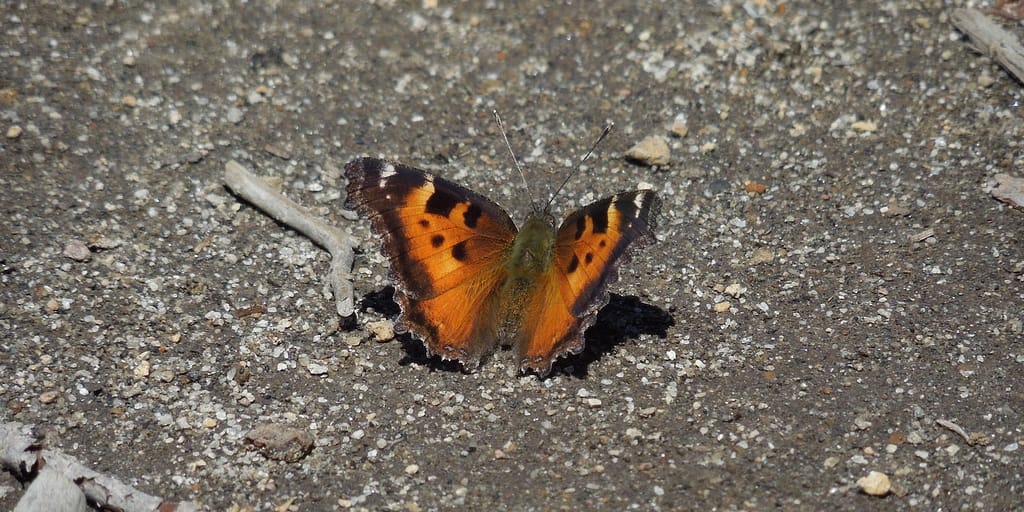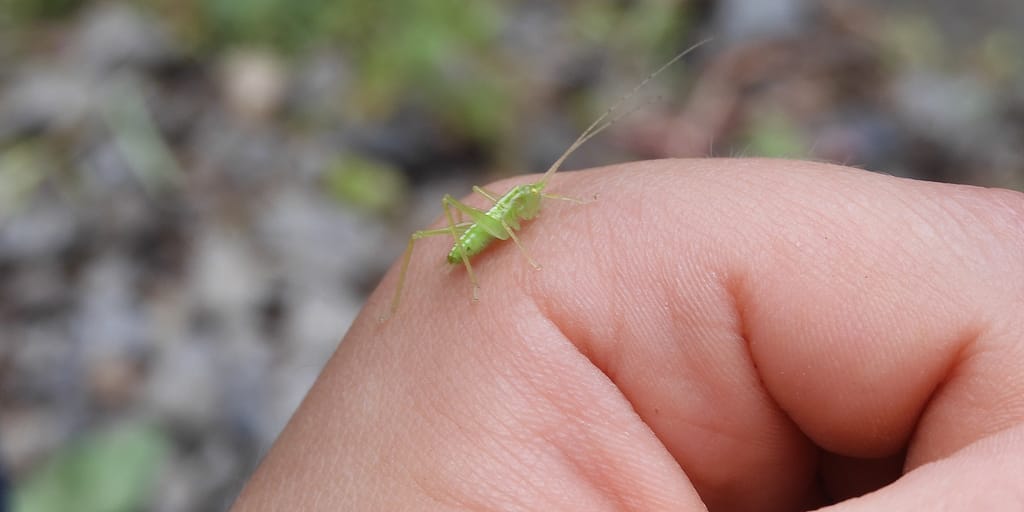Is your kid a fan of creepy-crawlies? Or maybe you are a little hesitant, but want to get to know these amazing critters better? You don’t need a big kit or a ton of materials to start learning about bugs. Keep reading for tips on where and how to find bugs!

Flower watch.
Flowers are often “buzzing” with activity, so they’re a great place to look for bugs. Bees, butterflies, and wasps all visit flowers to drink nectar. Spiders sometimes hide on flowers to catch prey. If you don’t see anything right away, pause and wait for a few minutes to see who comes along. Be sure to check the leaves and look between the petals as well! You never know who might be hiding there.
Leach Botanical Garden has a pollinator garden with a host of plants that bees love. You can also find flowers at a local park or look for wildflowers on a hike.
Look down.

Some critters spend their life on the ground. Beetles and millipedes often lurk along the edges of trails. Spiders sometimes build their webs close to the ground. Even bees sometimes visit patches of bare ground to collect mud for their nests. After a rain shower, you may also spot slugs and snails creeping along, looking for food.
The trails at Tryon Creek or Hoyt Arboretum are good places to find all these critters.
Find a patch of sunshine.

Meadows and forest clearings are great places to look for bugs. Bees and butterflies visit the wildflowers for nectar. Other, plant-eating insects like grasshoppers hide in the tall grass, while ants crawl around the roots. And don’t forget the ladybugs that often lurk on the long stems, looking for aphids and other prey!
You can find both shady trails and open, sunny meadows at Cook’s Butte Park and Powell Butte Nature Park—both parks are wonderful places to watch for bugs.
Check the trees, too!
While we usually expect to find bugs living close to the ground, they may be hiding just above our heads. Some moths hide on trees during the day, and many species of caterpillars live in trees. You can also find beetles, spiders, ants, and a host of other small critters crawling up and down tree trunks. The trick is to wait and watch. After a minute or two, you may start to notice movement and an “empty” patch of bark or lichen.
During parts of the year, you may notice caterpillars lowering themselves from the trees on silk threads. They’ll hibernate in the ground over the winter, and then emerge as moths and return to the trees to lay their eggs. The trails at Tualatin River National Wildlife Refuge and at Camassia Natural Area are both good places to explore, with their mix of meadow and forest.
Make a water station.
Some insects like bees and butterflies will visit puddles for to get a drink. You can make a water station for them using a shallow bowl. Fill the bottom of the bowl with gravel so that the bees have somewhere to stand and add a couple cups of water. Place the bowl where you can watch the insects that visit it. You can do this project at home and check back during the day to watch your visitors!
Ask questions.
Are they flying from flower to flower? Are they stopping to crawl around one flower at a time? Are they buzzing low to the ground or feeding and then flying off again to somewhere else? What else can you notice about the bugs? You can carry along a sketch book to draw the insects you see and make notes about their behavior. Or you can take photos and use them to create journal or scrapbook later.
